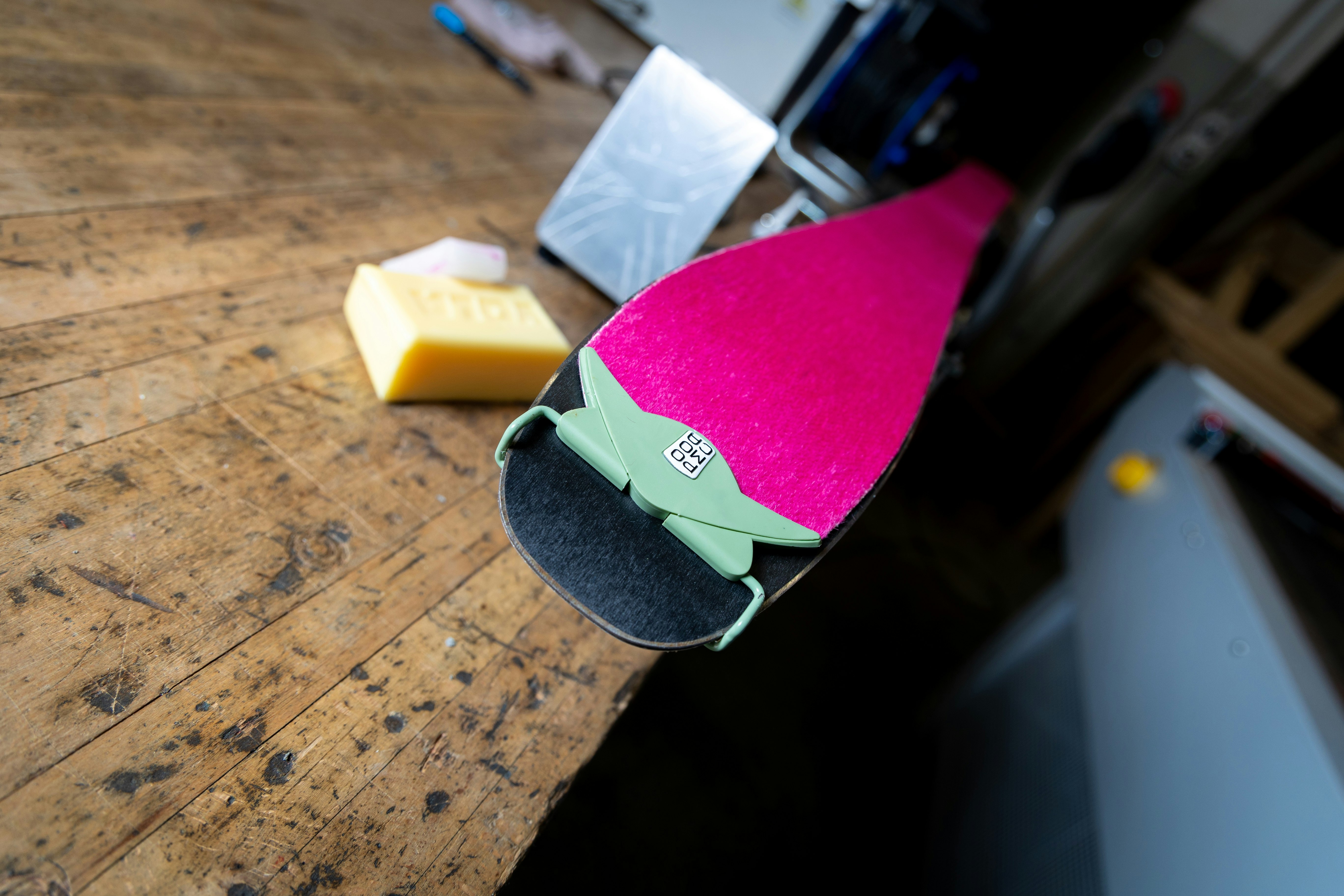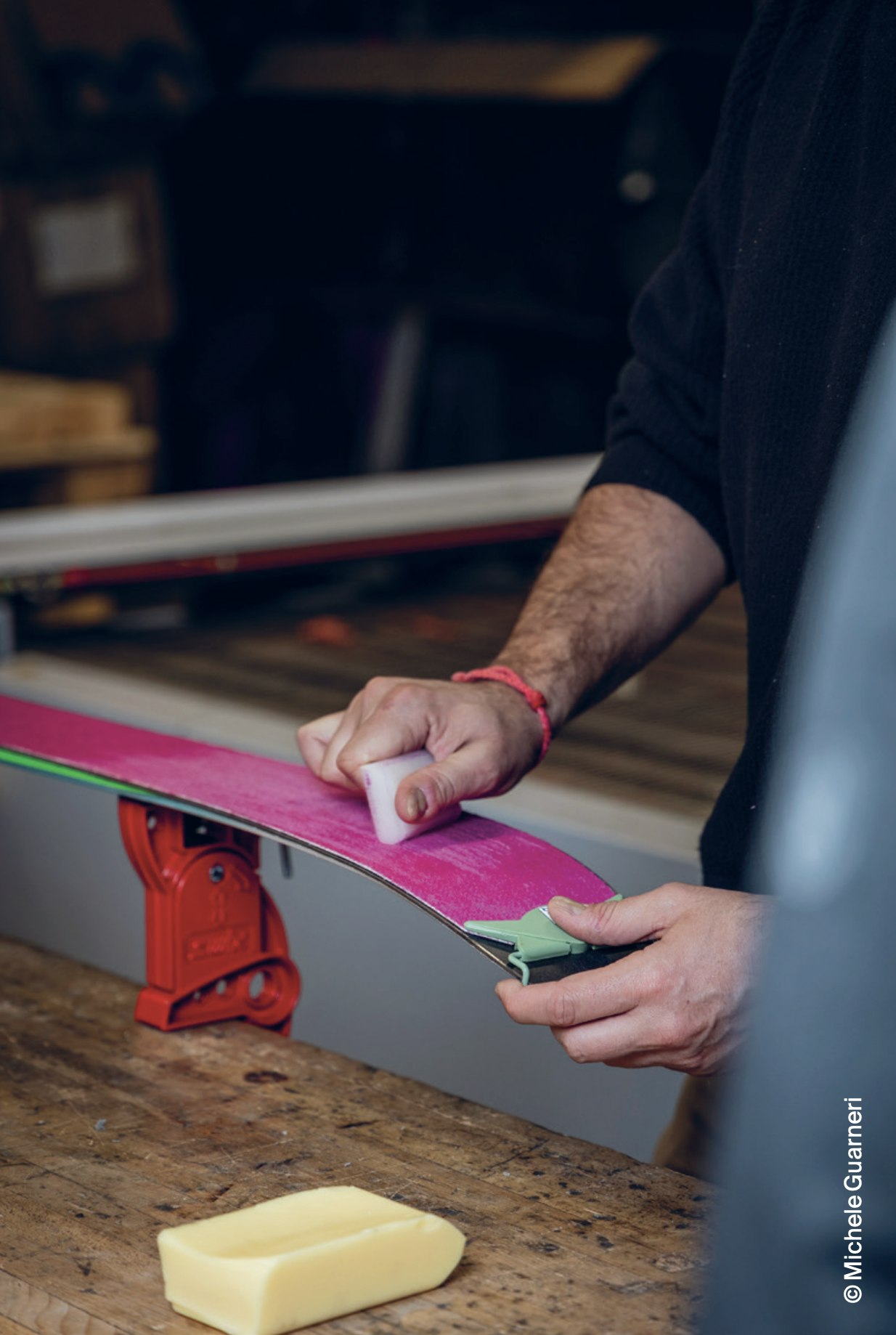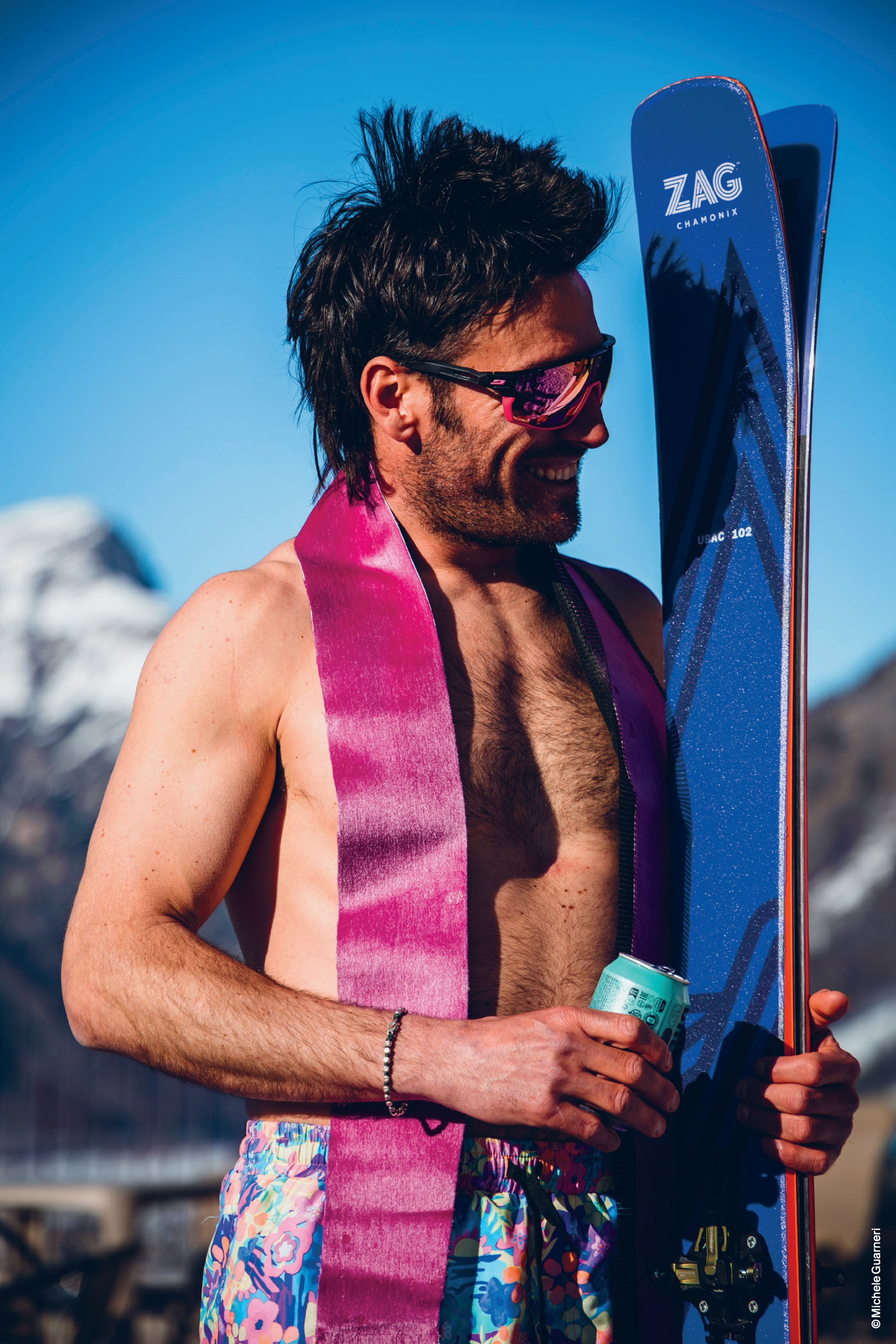Enemy number one for adhesive is the dirt transferred from the snow to the base of your skis to your skins - especially if it’s greasy (like hydrocarbon residue) or resinous. Not to mention the grit spread on roads and parking lots, transferred by boots and skis to the first dozen or so meters of snow on the nearby slopes. And then, of course, there’s the excess wax on the base of your skis, which picks up basically everything. All stuff that has a solvent effect on the glue. Adhesives would last more or less forever if the base of the ski was cleaned, waxed and well brushed. To clean the base, watch any video tutorial, the same method applies to all kinds of ski. It’s essential, takes hardly any time, no equipment and costs basically nothing. Do it, and do it well. Waxing your skis: ski techs know what to do, including with traditional hot wax, and they have a workbench, clamps, iron, brush and scraper, so the only thing left to do is a thorough brushing. For everyone else, liquid waxes are also a good option; apply cold, then polish and you’re basically good to go (follow the instructions on the bottle). The only (essential) thing left to do is a good brushing to remove the excess dust. This isn’t usually included in the instructions as otherwise the product wouldn’t sell - too much hassle for the average recreational skier. But then they stick to riding the lifts and skiing groomers - what goes up, must come down, after all - while you’re slapping skins on them. So it bears repeating: a base that has been waxed but not scraped and brushed, or a dry base, gets very dirty very quickly, which also leads to worse glide and worse handling.

Enemy number two of adhesive are hands and gloves, which can also transfer greasy residue. The less you touch glue, hybrids and gels, the better. If you’re not a racer, you can avoid touching them altogether when transitioning, handling the tip and tail attachment points instead. If you only have hardware at the tip, rip off your skins from the shovel and immediately attach the 20-30 cm protective netting that they came with, then fold your skins over it, so they can easily be reopened without pawing the adhesive with dirty, sweaty hands.
Enemy number three of adhesives is drying your skins with the glue exposed, or glue-on-glue, in direct sunlight, especially when one beer leads to two and the conversation at the bar is flowing. They need to be kept in the fresh air in the shade, then you can dry them properly at home at room temperature. A piece of netting or film is essential for stowing them away at the end of the season, even for hot glue on race skins, where glue-on-glue is usually advised (for short-term storage). The plush should be treated regularly. Glide is important, but not as important as the anti-clumping effect that prevents ice and snow build-up. Skin manufacturers and some wax makers also offer lubricants and impregnating agents formulated especially for the plush. If these liquids are applied generously they can penetrate all the way through to the backing, but overall they don’t seem very long-lasting. However, for average or occasional use they are without a doubt the best option in terms of value for money. Another quick and easy solution is a silicone spray lubricant, which you can find at any hardware store. It’s not bad on wet snow, but tends to slow things down on cold, dry snow. Also it can drip and penetrate gaps quickly, so you need to take care not to spray the glue or base of the ski (you apply it to the skins when already attached to the skis, ideally the day before, then let them dry for a few minutes before putting them back in their storage bag), while it doesn’t seem to last too long on the backing or membrane.

The best option?
Is a DIY hot wax
The best option is a DIY hot wax. If done well, the hot wax renews and smooths the plush, which can get a little matted from use on rough terrain. You don’t need a workbench and clamps, use the ski as a support and rub the solid wax onto the skin, then iron it. Job done. It takes longer to read that sentence than to do it. No drips, no flakes, no dust (if you’re not preparing race skins). If you’re new to this, do it after attaching the plastic film to the adhesive, not to a skinned ski. Use a soft wax (any cheap version will do), set the iron temp to around 80°C, repeat a few times and follow the grain of the plush. If you’re a dab hand, and you know how to avoid causing damage with a hot iron, use an oily/soft wax that will penetrate down to the backing and treat it (a little leftover graphite or molybdenum wax will supercharge your skins). Use a warm iron, checking the heat on the skin and the stability of the adhesive. Finish off with a colder wax, ideally slightly lower than the first in terms of temperature and hardness. Use a hot iron and tamp the skin bit by bit with the melted wax on the iron as if you were waxing a ski with a hard wax for cold snow. We know, it’s the opposite way round to how you would treat a base, but it works differently on the plush and backing to what it was designed for. It may look a mess, but in terms of performance on the snow it’s no different to factory treatments. Any serious racer waxes their race skins every time, just like their race, and even training, skis. Everyone else should do it regularly, or at least when necessary, depending on their condition and the type of snow you’re up against. The exception to this rule is 100% nylon skins, as the wax doesn’t really stick to the polyamide and there’s a good chance it’ll weaken the fibers, unless you really are a pro and you handle the iron very carefully. And in any case you’re unlikely to get them to glide any better. These are grippy and/or cheap skins, and the (few) people who buy them probably don’t worry too much about it. They’re better off with sprays and silicone. A bar of wax in your backpack is fine in case of emergency after you’ve removed the snow or ice from your skins. It sometimes helps, for a little while. But applying it cold, at home or in the parking lot, is a fairly pointless exercise compared to the other methods described above. And doing so when you’re already out on the snow is just plain desperate; at least use it sparingly and only just before the descent (as long as you’re not planning another ascent).

Share this article

